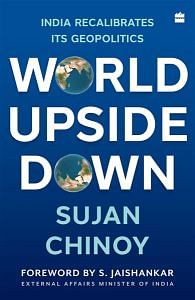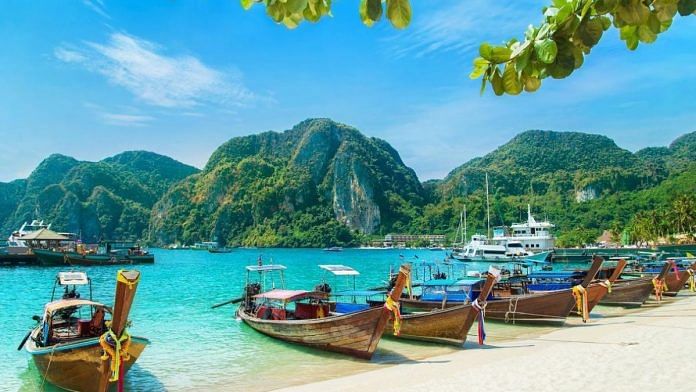In recent years, the Government of India has adopted a proactive policy aimed at transforming the Andaman and Nicobar Islands, a tri-services command, as an economic hub and one of the key centres of India’s defence and security strategy. Until now, the balance between environmental preservation, tribal welfare, national security and economic development was skewed in favour of isolating the islands due to strategic considerations. The economic potential of the Andaman and Nicobar Islands had largely remained untapped. As the islands provide India a commanding geostrategic presence in the Bay of Bengal and access to South and Southeast Asia, a focused development plan for the islands is expected to greatly enhance the country’s geopolitical leverage in the Indian Ocean region.
The Government of India constituted the Island Development Agency on 1 June 2017 for the development of islands. For the first time, under the guidance of the agency, an initiative has been taken for sustainable development in identified Andaman and Nicobar Islands. Four islands have been covered in the first phase. The focus is on creation of jobs through the promotion of tourism, seafood, coconut industry, etc. In the second phase, suitable sites in twelve more islands of Andaman and Nicobar have been covered.
The Andaman and Nicobar Islands have played a key role in enhancing India’s regional engagement with the Bay of Bengal littorals. This policy brief recommends the opening up of the Andaman and Nicobar Islands to other navies such as the United States, Japan, Australia and France, among others, to promote greater naval cooperation. Strategic context A combination of economic and strategic factors has significantly enhanced the strategic salience of the Bay of Bengal and its littorals. Strategically located, the Andaman and Nicobar Islands, larger than several island countries in themselves, are an asset in India’s defence and strategic calculus.
The islands straddle Duncan’s Passage and the Ten Degree Channel. The Preparis Channel and Six Degree Channel are located to the north and south of the island chain, respectively. All these passages are important trade routes for any shipping destined for Southeast and East Asia. The 572 islands, out of which only 38 are inhabited, comprise per cent of India’s exclusive economic zone (EEZ).
The Six Degree and Ten Degree channels in the Andaman Sea, which lead to the Malacca Strait, are vital to the sea lanes of communication along which flow global commerce, including energy trade, between Asia, Africa and the Pacific. The Andaman and Nicobar Islands are at the intersection of the Indian Ocean and the South China World Upside Down Sea, and further to the Pacific Ocean, an important fulcrum of the strategic concept of the Indo-Pacific.
China’s forays in the Indian Ocean As China’s economic and strategic interests have grown in the Indian Ocean, so has its natural imperative to secure those interests. The fact is that the Chinese presence in the Indian Ocean is rather new and, therefore, quite logically seen as disruptive. Except for a brief period in the fifteenth century when Admiral Zheng He’s flotillas voyaged into the Indian Ocean, visiting Sri Lanka and southern India, China has never had an enduring historical presence in the Indian Ocean. This is different from the other great powers such as the US, France and Britain in particular, who have long maintained territory, populations and a naval presence in the Indian Ocean, going back an extended period of time.
However, over the last decade or so, China has steadily expanded its maritime presence in the Indian Ocean littoral through the continuous deployment of its naval forces, arms sales, creating bases and access facilities, ramping up military diplomacy, cultivating special political relations with littorals, and lavishly disbursing developmental finance for strategic ends. It has used the alibi of anti-piracy operations in the Gulf of Aden to ramp up the scale and frequency of its presence, without consideration for the threat perceptions of India. An egregious example is the deployment of a submarine, which berthed in Colombo in Sri Lanka in 2014, ostensibly on its way for so-called anti-piracy operations. China has also steadily enhanced its operational turnaround in the Indian Ocean and developed new bases, including at Gwadar and Djibouti.
This broad-based trend in the evolution of China’s presence is also reflected in the Andaman Sea and the Bay of Bengal, where Chinese naval and survey vessels have been on the prowl and have occasionally entered India’s EEZ without prior intimation. China’s economic 78 Sujan R. Chinoy and strategic engagement with Bangladesh, Myanmar, Thailand and Malaysia in the Bay of Bengal/Eastern Indian Ocean has been noticeable in recent years.
Access to Andaman and Nicobar Command The tri-services Andaman and Nicobar Command has progressively emerged as a linchpin of India’s regional maritime engagement in the Bay of Bengal and the Andaman Sea. Various multilateral and bilateral maritime engagements, i.e., the Bay of Bengal Initiative for Multi-Sectoral Technical and Economic Cooperation (BIMSTEC), the MILAN series of exercises, coordinated patrols, and bilateral exercises with littoral states in the Bay of Bengal and the Andaman Sea have contributed to this purpose.
As regional maritime forces have expanded their cooperation with the Indian Navy in recent years, there is a new appreciation in Southeast Asia for India’s potential in offsetting China’s dominance of littoral Asia. While regional navies of Southeast Asian countries have been making regular port calls to Port Blair, other major navies, i.e., the US, Australian, Japanese and French, have shown an interest in visiting the Andaman Islands for port calls and exercises. There have been some suggestions for coordinated surveillance of the Malacca, Sunda, Lombok and Ombai-Wetar straits through the collaborative use of the Andaman and Nicobar Islands and Australia’s Keeling (Cocos) Islands.
Similarly, there have also been some recommendations about collaborative anti-submarine warfare efforts in the Indian Ocean in which the Andaman and Nicobar Islands could play a critical role. A few visits by other navies to the islands have taken place in recent years. The Royal Australian Navy has been participating in the MILAN series of exercises from 2003 onwards, which take place in the Andaman and Nicobar Islands. Also, Royal Australian Navy warships have made a few visits to Port Blair. A Japanese flotilla of minesweepers visited World Upside Down Port Blair in 2011.
The French Naval Ship Var, a logistics support ship, visited the islands in 2006. Similarly, a Royal Navy flotilla of the United Kingdom visited the islands in 2003. It needs to be highlighted that these visits have not only been sporadic, but have also been kept low-key with limited publicity, if any. However, when it comes to the US, none of its naval ships or aircraft have been given access to the Andaman and Nicobar Islands in the past. This is a matter that needs to be rectified in light of the fact that India and the US have a Comprehensive Global Strategic Partnership and the US is India’s biggest defence partner today.
 This excerpt from Sujan Chinoy’s ‘World Upside Down’ has been published with permission from HarperCollins India.
This excerpt from Sujan Chinoy’s ‘World Upside Down’ has been published with permission from HarperCollins India.



